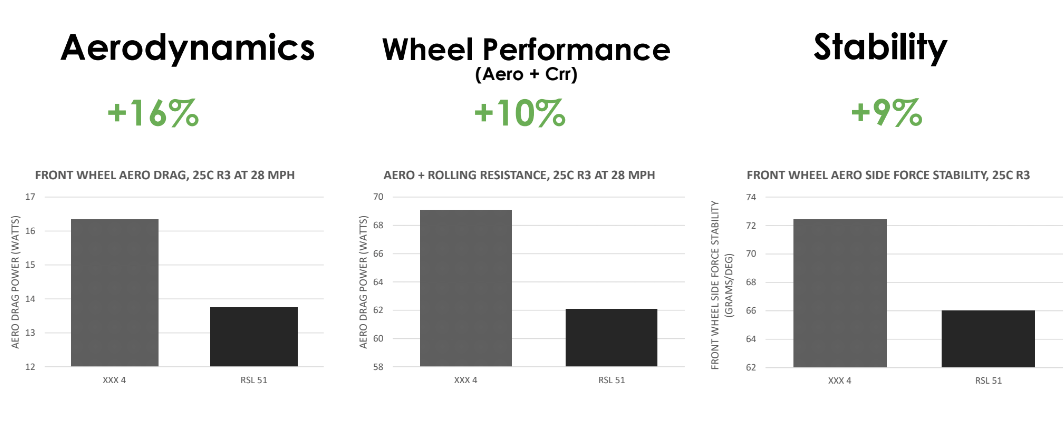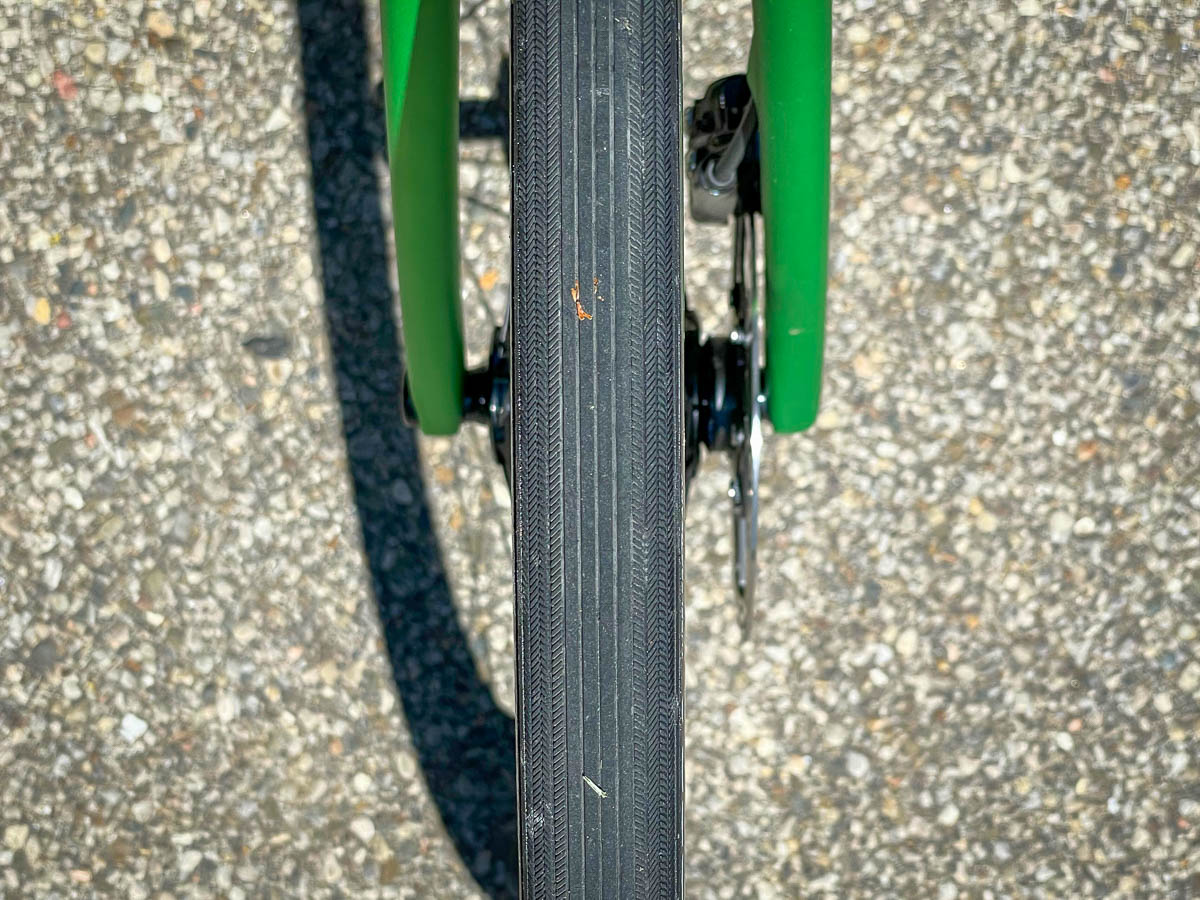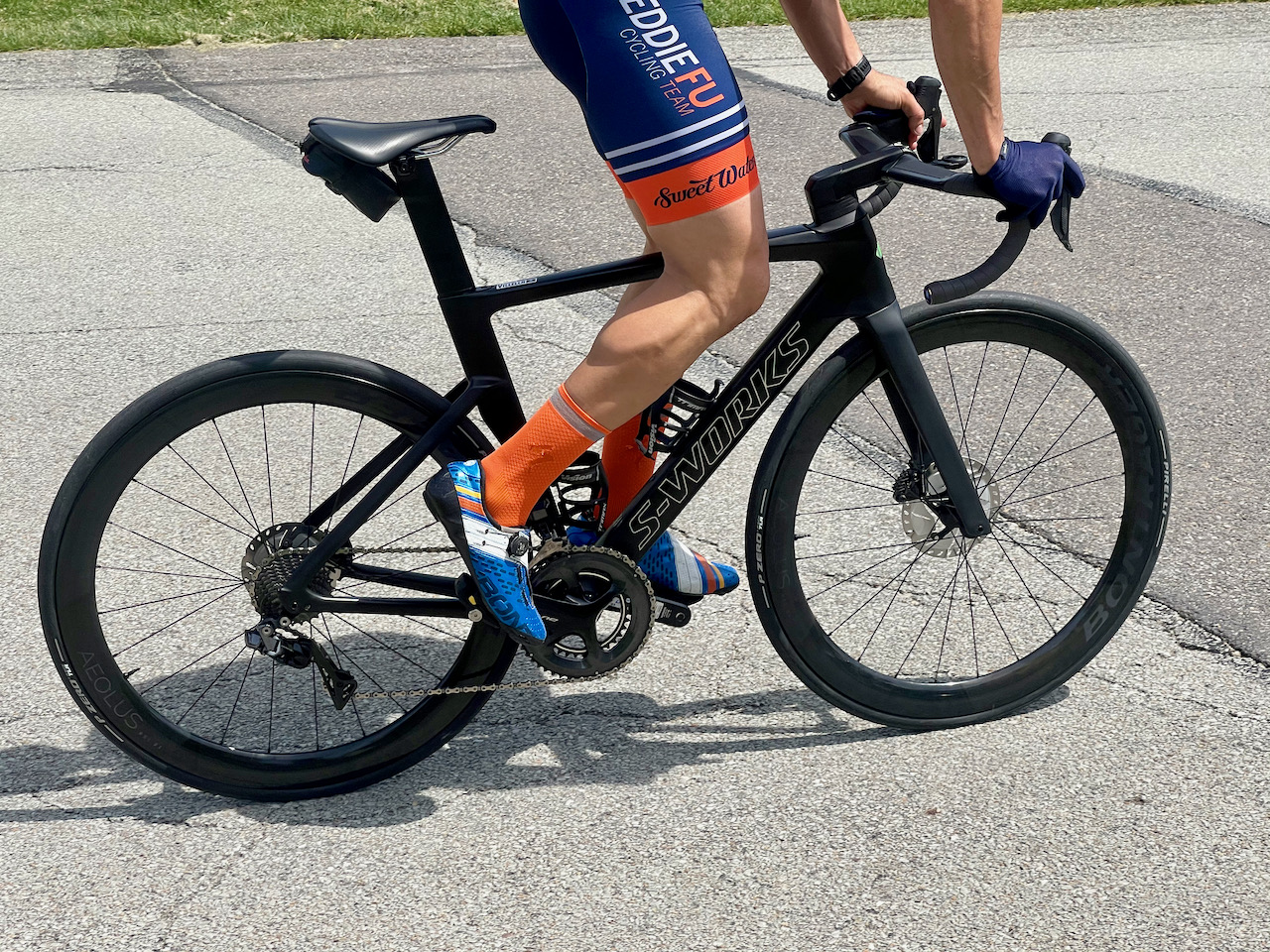Bontrager’s new Aelous wheelset is hyper-focused aerodynamics and speed- dubbed by the company as “the fastest wheel we’ve ever created”. We had a chance to put them through the paces and races – do they live up to the claims?
The line is an expansion of the previously released Aeolus 37 RSL (not to be confused with the 37V gravel wheel). This wheel is Bontrager’s departure from the Aelous XXX design, taking the new version to disc and tubeless/tubed only. Now, this shouldn’t be shocking, but Bontrager and the teams they supply are racing the wheels tubed or tubeless depending on the conditions. No more glue and stretching tires – just sealant or latex tubes.
A wider rim for aero gains
Bontrager focused much of their attention on the new rim shape of the Aelouls line. The 37 RSL (a new profile to the Bontrager wheel line) boasts a slightly wider 21 rim width and a 28 overall width. Bontrager wanted to keep these wheels as light as possible and concluded that the rim width, in conjunction with the class of riding this wheel would excel at, didn’t merit a broader cross-section.
In the deep end of the expanding Bontrager RSL family are wheel depths aimed at all-out speed and aerodynamic performance. The line has new options in the 51, 62, and 75mm deep profiles – giving the RSL family four options for different conditions.
The deeper section rims (51, 62, and 75mm) received a wider rim and closer attention to the aerodynamic performance of the wheel. Bontrager moved to a slightly wider 23mm inner width (over the 21mm inner on the Aeolus RSL 37 model) and a 31mm outer for these wheels. The team at Bontrager also maximized their development time on the new wheels by going straight to 3D CFD modeling from the beginning. Utilizing the number crunching abilities of super computers, they were able to run their programs non-stop until the best results were found in both low and high speed conditions.  The overall findings were that the wider the rim (within reason), the better performance, proven to roll with less drag & rolling resistance, and provide a better aerodynamic connection with the tire. They found that the 23mm inner width matched with a 25mm tire yielded the fastest setup in testing.
The overall findings were that the wider the rim (within reason), the better performance, proven to roll with less drag & rolling resistance, and provide a better aerodynamic connection with the tire. They found that the 23mm inner width matched with a 25mm tire yielded the fastest setup in testing.
Rim details
The new Aeolus rim is not hookless but has a beefy shape thanks to its 31mm overall width. The wheel is crafted from Bontrager’s RSL-level OCLV carbon, a construction they claim comprises some of the lightest and strongest carbon fiber available. Compared to the Aeolus Pro wheels, the RSL level wheels have a raw carbon finish that shows the individual carbon sheets in the right light.
The trim color is a deeper black/carbon, with a laser etched-style logo on the rim. In recent years Bontrager changed the chemical finish of their carbon to stop fading and discoloration that happened in the early (2011) versions of the Aeolus D3 wheels.
Hub details
With a new wheel comes an updated hub, and the Bontrager RSL is no different, employing the latest high-end road race hub from the masters at DT-Swiss. The Bontrager-styled DT-240 EXP hub is the same across the entire Aeolus RSL wheel line.
Bontrager’s take on the DT-240 EXP is different than others using the same base hub on their high-end wheels. Bontrager plays up the flange and gives a shield over the spoke head – adding styling that sets it apart from the sea of straight-pull aesthetics. This stying uses a unique straight pull spoke design, with a spoke head that wedges into the flange cutouts.
The hubs come stock with 12mm endcaps and an 11spd freehub body. You can swap the end caps for 15mm for those wondering, and the freehub body is compatible with other Ratchet EXP freehubs like XDR.
Actual Weights
- Bontrager Aeolus RSL 51 weight: 1460g/set
- Bontrager Aeolus RSL 62 weight: 1516g/set
- Bontrager Cloth rim strip: 24g
- Bontrager plastic tubeless rim strip: 60g
- Bontrager tubeless valve core: 6g
Hands-On: Aeolus RSL 51 – Jordan
Set up
Like all Bontrager wheels – the new RSL 51s arrive with a reinforced cloth rim strip for tubes and a plastic Bontrager tubeless strip. We opted for the tubeless strip for my setup – following the directions of the manufacturer. The strip itself is 60g per strip, so if you did choose to roll with another tubeless setup – say Stan’s tape, you can lighten this wheelset even more.
We had no problem mounting Bontrager’s new AWT road tire and seating it with a floor pump. It took a few spins of the wheel in hand to completely seal, but that’s common.
Installing the wheels, adjusting the brakes, and spinning them up, I couldn’t feel any oscillation, something that I find common in the stand. The bike stayed nice and still with a slight twitch now and then, a sensation similar to adding the Silica Balance Shield.
The 28mm tire measured out to a wider 29.50mm and fit my road frame nicely. This ballooning effect could be troublesome to riders looking for the maximum-width tire, but some research could quickly narrow the scope. I don’t see any riders fitting a 30mm tire in an aero frame without clearance issues – but I’ve been wrong before.
The ride
I stuck to the fast tarmac close to home for my first couple of rides, where the winds are plenty and the roads are choppy. I started the pressure pretty high at 80psi front and rear to see how the tire felt. I quickly noticed that was too much air after hitting some local country roads and dialed it down to a smooth 75psi. The difference in comfort with the lower pressure is instantly noticeable, but I didn’t feel the tire squirm or bob – I felt very in control.
Rolling on open, unrelenting, wind channel roads, I found the wheels to hold steady very well. When gusts of wind would come either from passing cars or what have you, I felt a slight tinge of movement – like getting off the front from taking a pull, but that’s it. I liked the ease at which the wheels maintained speed; there was no soft spot, just steady rolling with no need to add effort to keep balanced.
Climbing and descending with the Aelous RSL 51s is like riding with a much lighter wheel. The 51mm deep wheels don’t feel like a hindrance; they spin up easy on super steep pitches and give the sensation of gaining speed in switchback style descents.
For racing, I swapped the Bontrager AWT for some Pirelli P Zero Race TLRs, and these brightened up the wheels a lot. The supple rubber gave me sensations of riding my tubular and was still riding at a comfortable 75psi.
Sitting in the pack, the Aeolus RSL 51s felt awesome. When surges in the group hit, I responded with less power (maybe I was feeling good that day) and stayed comfortable. In the wide-open sprints or trying to bridge up to a group, these wheels feel like an extra gear – holding speed easily and abundantly.
My only complaint about the wheels is at the $2400 price tag, and they should come with a wheel bag or something to protect your investment. Yes, all the Bontrager Aeolus wheels come with the “Guaranteed for life” carbon warranty, but I was bummed to see no bag in the box.
Hands On: Aeolus RSL 62 – Zach
When it comes to aero wheels, I typically reach for depths of 50mm or less. Most of my riding is a solid mix of wide open flats where having an aerodynamic edge is a huge benefit, and steep, short punchy climbs where the opposite is true. But with Bontrager claiming big benefits in both high and low speed cross winds and a fairly light package for a deeper wheel, I requested the RSL 62s.
The timing of this launch coincided with the new SRAM Rival eTap AXS group, which means that so far, all of my time with these wheels has been on board that test bike – a Mosaic RT-1d.
Setup:
These days, I usually go straight for the 28mm tires for the road. I’m fully on board with the “wider tires are faster” school of thought that is gaining traction. However, Bontrager says that these wheels are fastest (at least aerodynamically) when fitted with 25mm tires. So I went with that recommendation and mounted up a pair of 700c x 25mm Bontrager R3 Hard-Case Lite TLR road tires.

While the hot patch on the tire may say 25mm, when mounted to the 23mm internal width rim, the tires actually measured just over 28mm wide. That makes the tire almost as wide as the rim where the two meet.
Using the included Bontrager plastic tubeless rim strips, setting the tires up tubeless was very easy. I will say that one of the plastic strips had a visible cut in it – that I noticed before mounting fortunately. You don’t want to use a strip with a hole in it, so a quick inspection of the strip before installing is recommended.
To install the strips, I start by lining up the valve holes on the strip and the rim, and then insert the tubeless valve to prevent the strip from shifting as you snap it into place. Then simply stretch it over the rim until it snaps in. You may have to massage the edges of the strip down into the side pockets of the rim channel – I did this (gently) with the flat tip of a plastic tire lever just to be sure everything was seated properly.
One of the big benefits of the plastic strip design is that it provides a perfectly flat seat for the tubeless valve. As a result, you don’t have to crank down on the valve nut to try and get it to seal. The whole process is much less finicky than installing tape, and results in a nearly air tight seal allowing the tires to easily pop into place with many floor pumps. I was able to install both tires without using any tools – the fit is snug, but not so tight that it requires tire levers.
It’s nice that Bontrager gives riders an option when it comes to the tubeless tech. For those that just want the absolute easiest set up, the plastic strips are hard to beat. But for those who want the lightest set up, the typical tubeless tape will get you there.
Once mounted with Bontrager sealant, the tires have held air quite well – only leaking down a few psi between rides. I make it a point on new wheels to try and install and remove tubeless tires without using any tools to find out how easy tire installation is when using proper technique. Both the Bontrager and Vittoria tires easily went on and off without issue, and without having to resort to a tire lever – so if you’re struggling, make sure to pinch the tire beads into the center of the rim channel which gives you more slack to work with.
The Ride
Out on the road, the RSL 62s immediately hit you with a sound that is unlike anything else in the Bontrager line up. I’ve had quite a bit of time on the new Bontrager Aeolus Pro wheels, and the RSLs sound, and feel quite different. They just have that lively reverberation that only super light, deep carbon wheels have. Coincidentally, they also act as a megaphone for any bike-related noises. So if you have a disc brake rotor that is slightly rubbing, you’ll probably notice it more with these mounted up.
After riding the 62s on some very windy days that included some very exposed, high speed descents I’m inclined to believe Bontrager’s claims of offering improved stability in high and low speed conditions. Blasts of cross winds that normally would lead to a white-knuckled grip of the bar were shrugged off with a slight tug at the front wheel. I wouldn’t reach for the 62s for a day of big climbs and descents, but for those rides with plenty of flats and gradual hills, the wheels are surprisingly versatile. More importantly, on wide open stretches of pavement where there’s no hiding from the wind, the Aeolus RSL 62s do a admirable job of cutting through the wind, maintaining their heading all while giving you a noticeable boost in speed.
Initially set up with Bontrager R3 Hard-Case Lite TLR tires which have proven to be quite durable, I wanted to try out the wheels with something else for the sake of testing. Moving to a pair of Vittoria Corsa Control Tubeless Ready tires also in 700c x 25mm size, the ride got even sweeter. Like the R3s, these 25mm tires measured over 28mm on the wider rims, and sealed up tubeless without issue. Running 70psi in both tires, the ride of the Vittorias was ridiculously supple and seemed to improve cornering confidence on high speed turns.
Conclusion
The Bontrager Aeolus RSL 51 are a performance wheelset and come at a performance price, but if you want a wheel at the sharp end of aerodynamics – they are worth a hands-on look. The price is what you’ll pay for a wheel of this quality from most carbon race manufacturers. Still, the warranty coverage is fantastic—highly recommended for those who race road and crits as a do-it-all set up with climbing ability.


















